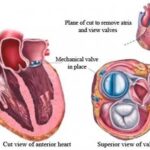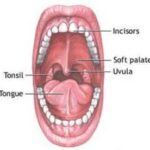We often hear how a tonsillectomy is a pretty easy surgery for kids to recover from and how it is typically more difficult for adults. Adults may not realize just how difficult it might be, however. Knowing more fully what to expect in recovery from adult tonsillectomy and preparing in advance can make the experience easier.
Timing
If you are not in an emergency situation, try to schedule the surgery for a time when you can take plenty of time off. I was working as a college instructor when I the doctors finally decided my tonsils had to come out, so I set up the appointment for the very beginning of summer since that would give me lots of time to recuperate. Allow yourself at least one week, and preferably two, for recovery. This is not like getting a cavity filled, and you need to give your body time to rest and recuperate.
It is also important to spend time at home after the tonsillectomy to help prevent infection. You have open, sensitive tissue and have lost one of the body’s ways of inhibiting illness, so you should avoid contact with others for a couple weeks.
Accompanying problems
I was told there would be pain, so I was expecting that. I was not expecting some of the other problems that came with it, such as the incredible stuffiness. The tissues in the throat and the nasal cavities will be swollen, and they are likely to stay swollen for some time. Prepare your sleeping space ahead of time by having extra pillows so you can prop up your head as you recover. A cool mist humidifier can also help ease the swelling and difficulty breathing.
Diet
Keeping the tissues hydrated while recovering from adult tonsillectomy is particularly important. You will need to drink lots of water. Note that water is really what you should stick to-not orange juice, soda or milk-and you should not use a straw. Juices and other foods that are acidic can be very painful to swallow, just like carbonation and any dry, scratchy foods. Some people have trouble with milk products, too, since they sometimes create a heavy film that can be difficult to swallow.
Prepare by getting lots of soft, cool foods and liquids. I lived on popsicles and jello for a few days and then added pudding and yogurt. I particularly like mild custard because it gave me some protein.
Pain
Ok, so I said I was prepared for pain, but I really wasn’t. I had given birth to three kids and had severe tonsillitis at least twice a year for a decade, but this pain was excruciating. Most adults don’t feel too bad immediately after the surgery, but this is because of the amount of pain killer. The codeine I was given (as most adults are) didn’t help much. The real problem was that a month later, I was still in horrible pain, so much that I had trouble sleeping and functioning during the day. That was a longer recovery than I had been expecting, but it is not unusual for adults. Some patients can switch to OTC acetaminophen a couple weeks after the tonsillectomy, but it isn’t always the case.
Blood
They told me to watch for signs of infection, like fever, and warned me that there might be some blood. But what I experienced was much more than “some blood.” One morning, I had a coughing fit that felt like I was choking, and I started to spit up alarming amounts of what looked like clots for nearly 30 minutes. The doctor’s office assured me that this was common with adult tonsillectomy, but I was shaken. We probably would have called the doctor’s office even if I had known about clots, but I’m sure my growing panic exacerbated the situation, and perhaps I would have been more relaxed had I known.
Swallowing
Maybe I should have expected it, but one of the biggest problems I had after the tonsillectomy was trying to figure out how to swallow. My tonsils were so large that they were putting pressure on my vocal folds, making it difficult for me to talk (the surgeon said afterwards they were the biggest, ugliest tonsils he had seen in his practice; the surgery took three times the normal length for him to get them out). Getting those huge lumps out of my throat naturally affected how quickly material, especially liquids, went down, but I was unprepared for this drastic change and ended up choking a lot the first few days. Be sure to eat and drink very slowly and carefully for a while after the surgery until the new muscular movements become second nature again.
Prepare
Adult tonsillectomy is not a walk in the park for most patients, so you should prepare as much as possible ahead of time. Trying to return to work or do too much around the house before you have had full recovery may jeopardize not only the recovery from the surgery but your health overall. Be sure to ask your doctor about any symptoms that seem unusual or are troubling. But one of the best strategies may be to do what I tried to focus on-a future without tonsillitis!
References
” Care Of Patient At Home After Tonsillectomy & Adenoidectomy .” Loyola University Health System. Meddean.luc.edu.
“Tonsillectomy.” Medicinenet.com.



